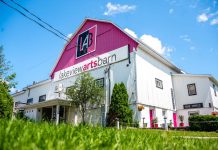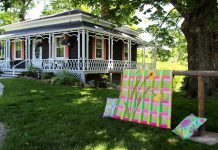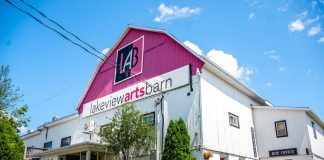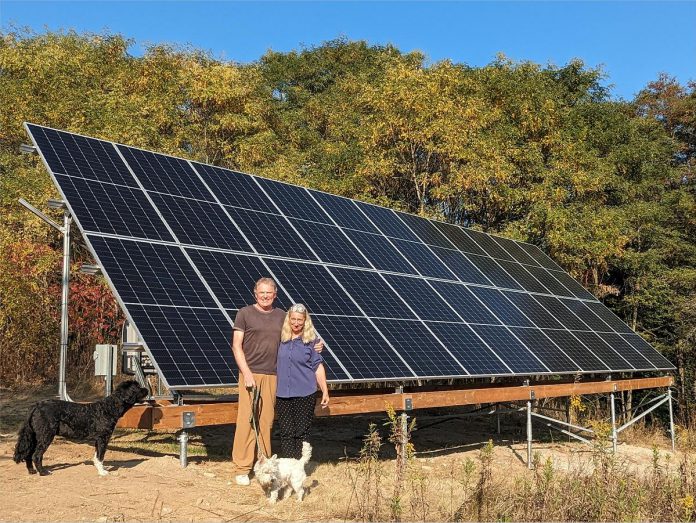
You may be one of many people preparing for higher bills as the change of seasons brings colder weather and shorter days. This season, imagine producing all the energy you need to power and heat your home, decreasing the cost of your energy bills.
Homeowners who have completed deep retrofits on their homes will barely see a change in their bills because they have achieved ‘net zero’ status. This means they have fully electrified their homes, and reduced energy use so much that they can produce — using solar panels and other renewable energy sources — as much electricity as they use.
“We’re pretty excited … we feel like we’re living in a dream,” says Heidi Schaeffer, standing next to the 22-panel ground mount solar installation she and her partner Russ Christianson recently had installed on their property near Campbellford. “We’ve been waiting a long time for the cost of solar to go down so that we could reach net zero.”
Along with the solar panels, Christianson and Schaeffer are now heating using air source heat pumps, rather than the wood heat they relied upon in the past (heat pumps are used for cooling too). They used the Canada Greener Homes Grant and Loan to achieve their net zero goal.
“Without the $40,000 interest-free loan and the $5,000 grant, it would have been hard for us to do it,” adds Christianson.
Sean Flanagan, who owns local renewable energy company Flanagan and Sun, works hard to keep up with the demand for his business. His company serves a mix of clients: some are not connected to the electrical grid, and some are but want to produce as much electricity as they use.
“My clients in general are looking to do something good for the environment while getting a reasonable return on their investment,” says Flanagan.
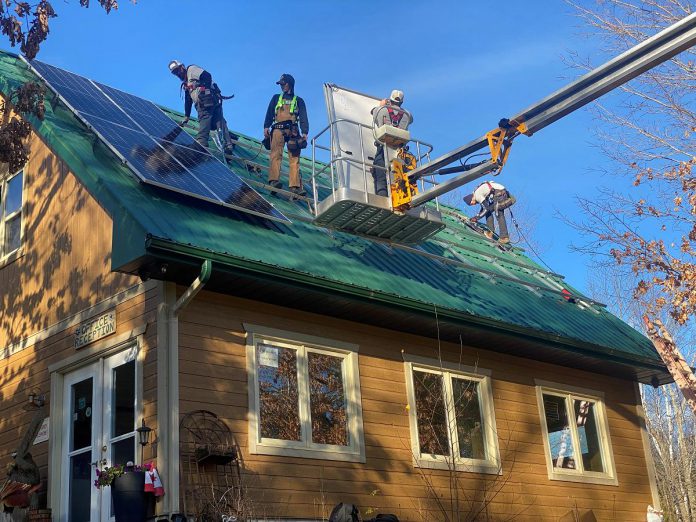
J.P. Pawliw, co-owner of local business Generation Solar, is also seeing an increase in homeowners wanting to learn more about solar.
“Interest in solar is tied to government incentive programs. Right now, we have grants and loans for homeowners, as well as new tax incentives for businesses.”
For most homeowners, rooftop solar is the best option for adding renewable energy. To reap the best benefit from your solar installation, Flanagan suggests using a south-facing roof area without many obstructions (such as roof vents or dormers) and with limited shade.
Connie McCracken got involved with climate action and the group For Our Grandchildren (4RG) after her grandchildren were born. She wanted to do something concrete to reduce her greenhouse gas emissions, and realized she had an ideal rooftop for adding solar.
“I’m hoping that I can influence other people to do it too,” McCracken says. “The interest-free loan was helpful for getting it done. It was a little stressful getting everything lined up, but (registered energy advisor Bryn Magee) at GreenUP was very helpful.”
All in, a typical residential rooftop net metered solar system costs somewhere in the $20,000 to $30,000 range, with bigger systems providing a higher return on investment over time. The net meter system used locally means that homeowners who are on the hydro grid receive credit on their electricity bills for the value of the electricity the panels produce.
Once panels are installed on your home, you may be able to zero out your consumption over a year, though because of fixed delivery costs, your bill will never actually be zero.
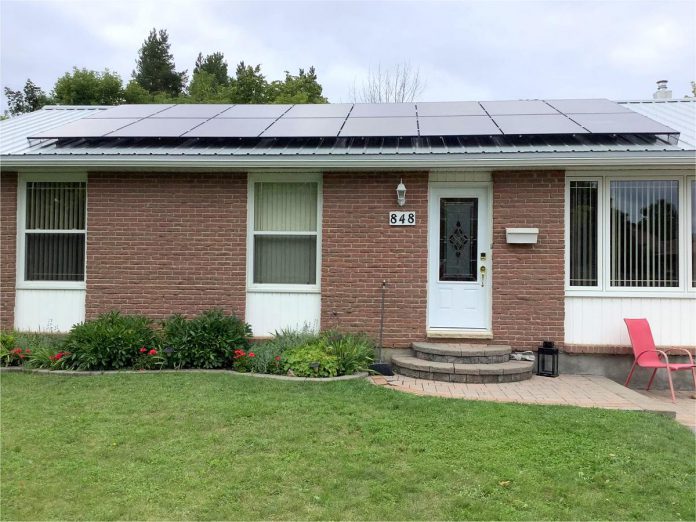
Generation Solar’s Pawliw cautions that installing solar energy is not a do-it-yourself job.
“If you’re interested in solar, take some time to find someone you feel comfortable working with,” he advises. “You’ll be relying on them for maintenance over the life of the system.”
Rather than direct payback, Pawliw directs customers to think of the “levelized cost of energy” for a solar system — a calculation used to measure the lifetime cost of producing energy.
“When you invest in a solar system, you’re locking in your energy costs for the next 25 years,” he explains. “You become insulated from future increases in electricity pricing.”
For those interested in powering their home with solar energy, the Canada Greener Homes Loan provides up to $40,000 in interest-free funds to support home energy efficiency upgrades. As a part of the Home Efficiency Rebate Plus program, a grant of up to $5,000 ($1,000 per kilowatt) is available for solar installations. You can book a home energy assessment with GreenUP to qualify for these incentives.
Now and in the future, homeowners who invest in home energy retrofits will benefit from reduced costs and improved comfort in their homes. In future columns, GreenUP looks forward to sharing case studies of homeowners who have sealed the building envelope, upgraded their mechanical systems, and even added renewable energy to their homes.
If you are interested in learning more about home electrification, join GreenUP at the free Home Energy Expo from 10 a.m. to 4 p.m. on Saturday, October 28th at Bridgenorth Community Hall and Library (836 Charles St., Bridgenorth), presented in partnership with Selwyn Township, Ontario Clean Air Alliance, and For Our Grandchildren. A range of local experts will give presentations and be available to discuss how electrification measures like a heat pump could be a good fit for your home. Learn more at forourgrandchildren.ca/event/home-energy-expo/.







